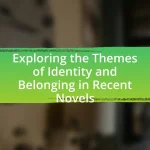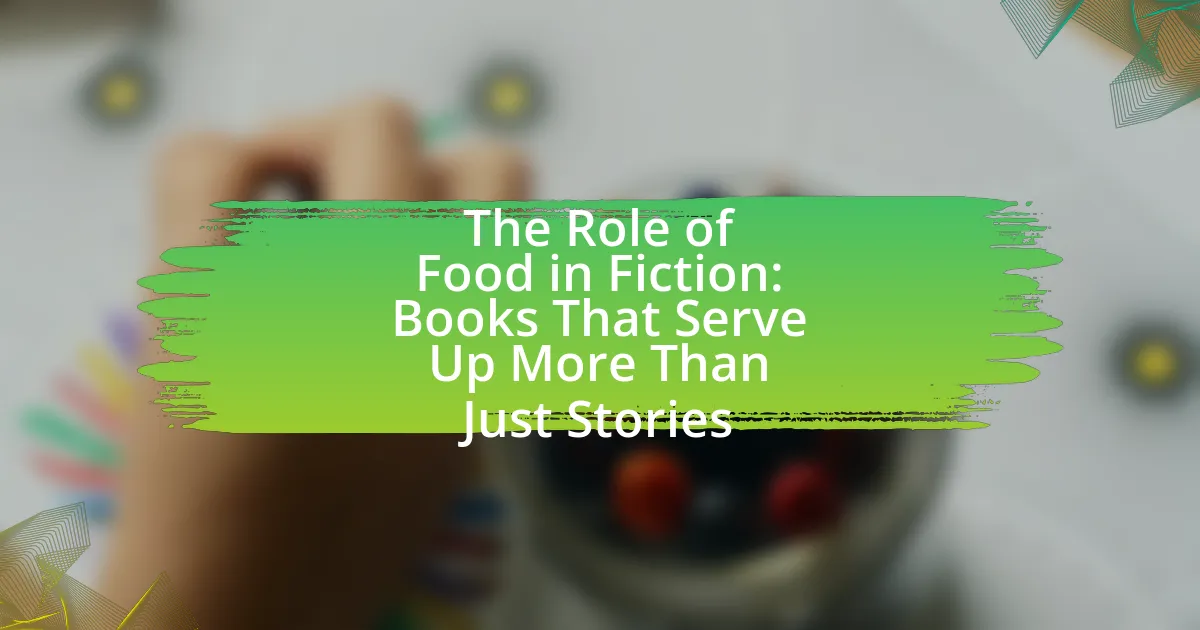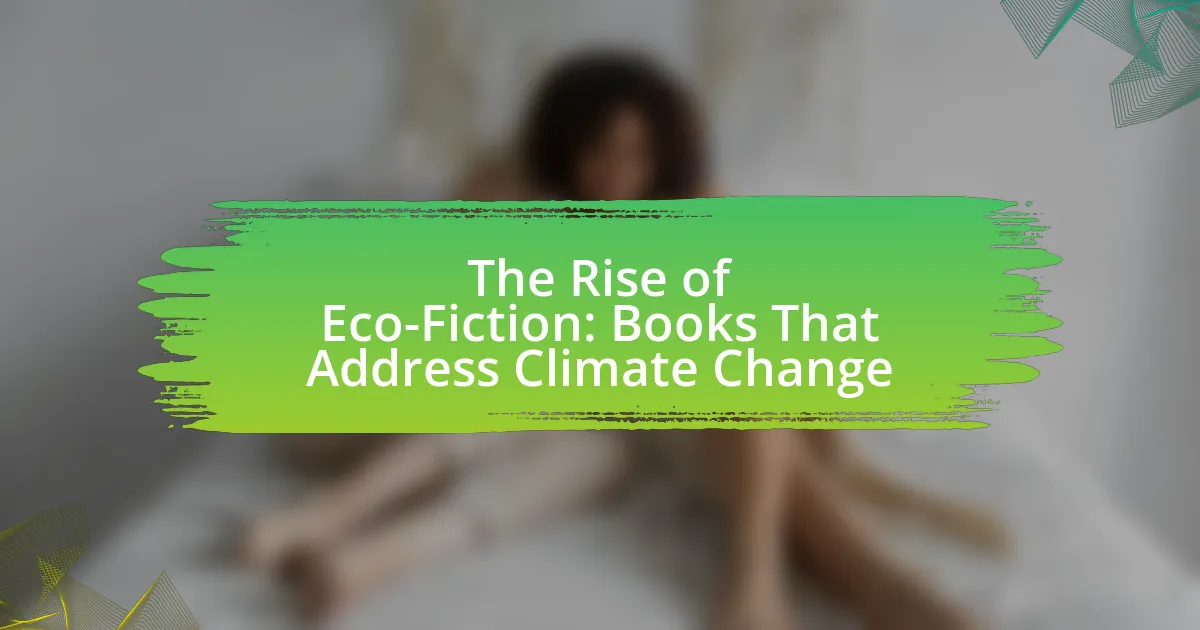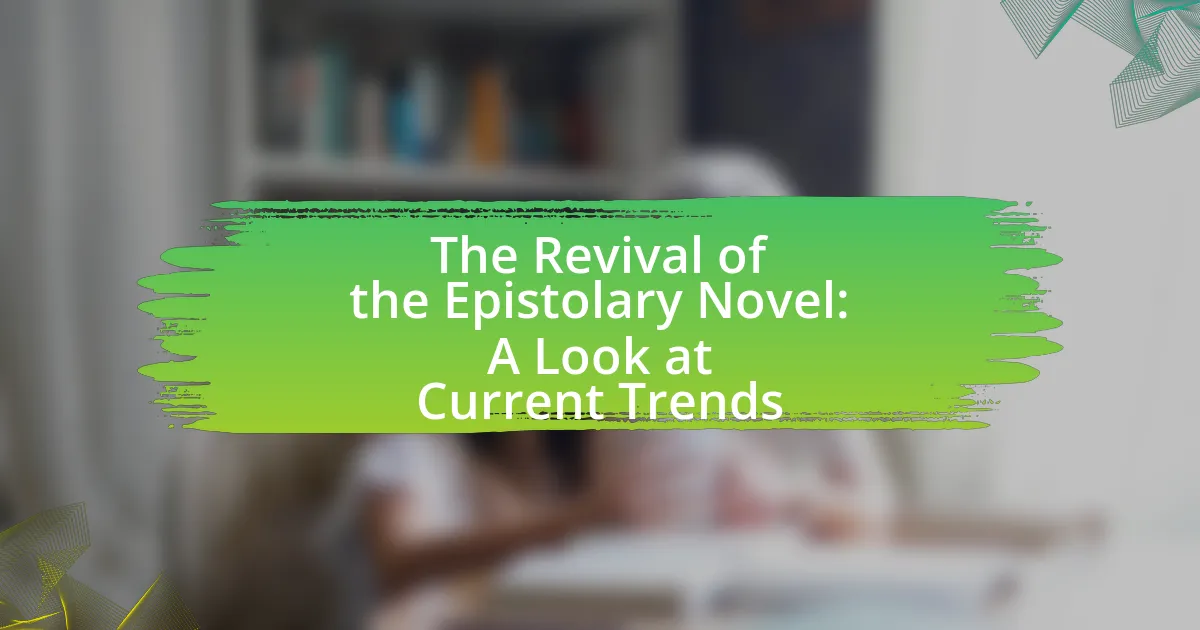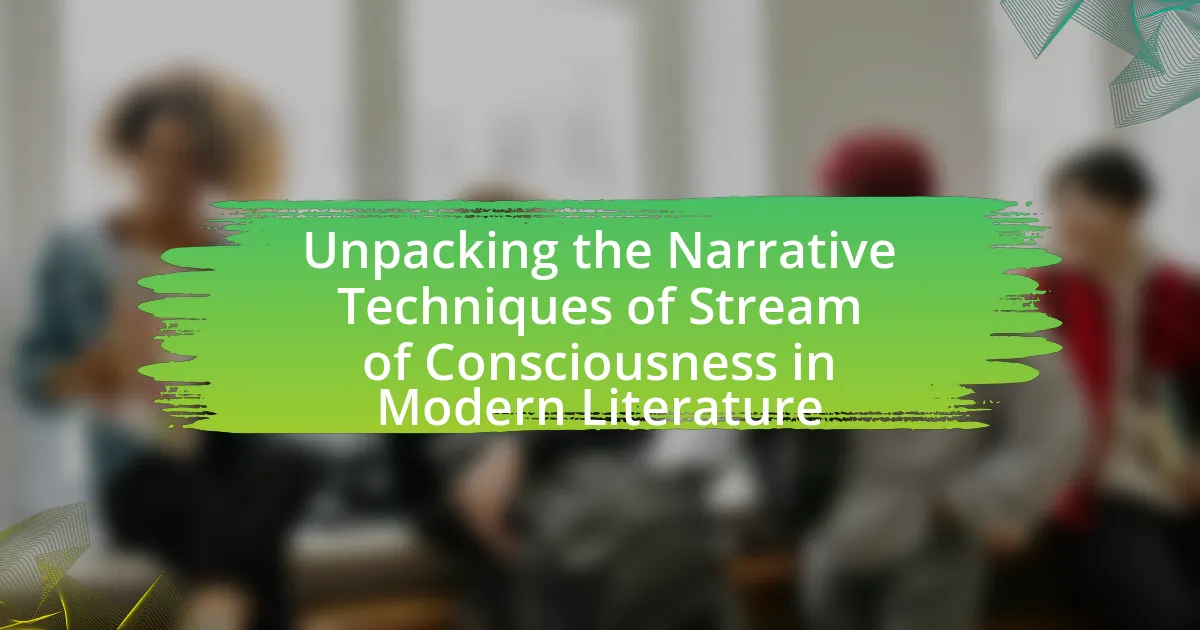The article examines how diverse voices are reshaping contemporary poetry by introducing a range of perspectives, themes, and styles that reflect the complexities of modern society. It highlights the significance of poets from various cultural, racial, and gender backgrounds, such as Ocean Vuong and Claudia Rankine, who challenge traditional norms and expand poetic expression. The discussion includes the role of language, cultural backgrounds, and representation in enhancing the thematic depth of poetry, as well as the challenges faced by diverse poets in gaining visibility within the literary community. Additionally, the article explores the impact of technology and social media on the dissemination of diverse poetic voices and outlines initiatives aimed at promoting inclusivity in the poetry landscape.
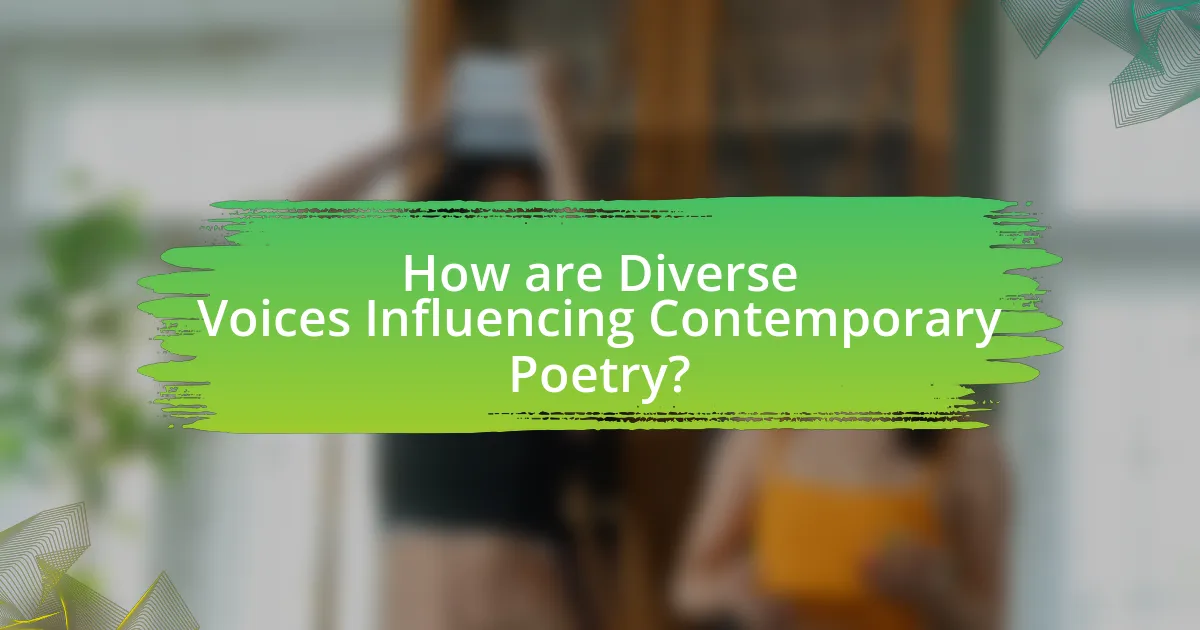
How are Diverse Voices Influencing Contemporary Poetry?
Diverse voices are significantly influencing contemporary poetry by introducing a variety of perspectives, themes, and styles that reflect the complexities of modern society. This influence is evident in the rise of poets from different cultural, racial, and gender backgrounds who challenge traditional norms and expand the boundaries of poetic expression. For instance, the work of poets like Ocean Vuong and Claudia Rankine incorporates personal narratives that address issues such as identity, race, and trauma, resonating with a broader audience. Additionally, anthologies like “The BreakBeat Poets” showcase the contributions of poets from marginalized communities, further diversifying the poetic landscape. This shift not only enriches the genre but also fosters a more inclusive dialogue around social issues, making contemporary poetry a vital platform for diverse voices.
What defines diverse voices in the context of poetry?
Diverse voices in the context of poetry are defined by the inclusion of varied perspectives, experiences, and cultural backgrounds that reflect the multiplicity of human experience. This diversity encompasses different ethnicities, genders, sexual orientations, socioeconomic statuses, and geographical locations, allowing poetry to serve as a platform for marginalized and underrepresented groups. Research indicates that poetry enriched by diverse voices fosters empathy and understanding, as seen in anthologies like “The BreakBeat Poets,” which showcases the work of poets from diverse backgrounds, highlighting their unique narratives and styles. This representation not only broadens the scope of poetic expression but also challenges dominant literary traditions, making contemporary poetry more inclusive and reflective of society’s complexities.
How do cultural backgrounds shape poetic expression?
Cultural backgrounds significantly shape poetic expression by influencing themes, language, and stylistic choices. Poets draw from their cultural heritage, which informs their perspectives and the subjects they explore, such as identity, tradition, and social issues. For instance, the use of specific cultural symbols and references can evoke particular emotions and resonate with audiences familiar with those contexts. Additionally, linguistic diversity allows poets to experiment with form and rhythm, as seen in the works of poets like Langston Hughes, who incorporated African American vernacular into his poetry, reflecting the cultural experience of his community. This interplay between culture and poetry not only enriches the literary landscape but also fosters a deeper understanding of diverse human experiences.
What role does language play in diverse poetic voices?
Language serves as a fundamental tool for expressing the unique identities and experiences of diverse poetic voices. It enables poets to convey cultural nuances, emotional depth, and social commentary, reflecting their distinct backgrounds and perspectives. For instance, poets from various linguistic traditions often incorporate idiomatic expressions, dialects, and cultural references that resonate with their specific communities, enriching the overall tapestry of contemporary poetry. This linguistic diversity not only enhances the authenticity of their work but also fosters a broader understanding and appreciation of different cultures among readers, as evidenced by the increasing recognition of multilingual poetry in literary circles.
Why is the inclusion of diverse voices important in contemporary poetry?
The inclusion of diverse voices is important in contemporary poetry because it enriches the literary landscape and fosters a broader understanding of human experiences. Diverse voices bring unique perspectives that challenge dominant narratives, allowing for a more inclusive representation of society. For instance, studies show that poetry reflecting varied cultural backgrounds can enhance empathy and social awareness among readers, as highlighted in the anthology “The BreakBeat Poets,” which showcases the work of poets from underrepresented communities. This anthology illustrates how diverse voices not only contribute to the depth of poetry but also resonate with a wider audience, ultimately transforming the art form itself.
How does diversity enhance the themes explored in poetry?
Diversity enhances the themes explored in poetry by introducing a multitude of perspectives, experiences, and cultural contexts that enrich the narrative and emotional depth of the work. This multiplicity allows poets to address complex social issues such as identity, race, gender, and belonging, reflecting the varied realities of human experience. For instance, the inclusion of voices from different backgrounds can challenge dominant narratives and offer alternative viewpoints, fostering empathy and understanding among readers. Research indicates that diverse literary voices contribute to a broader representation of society, as seen in anthologies like “The BreakBeat Poets,” which showcases the work of poets from marginalized communities, thereby expanding the thematic scope of contemporary poetry.
What impact does representation have on readers and audiences?
Representation significantly impacts readers and audiences by fostering inclusivity and enhancing relatability in literature. When diverse voices are present in poetry, they allow individuals from various backgrounds to see their experiences reflected, which can lead to increased empathy and understanding among different cultural groups. Research indicates that exposure to diverse narratives can challenge stereotypes and broaden perspectives, as evidenced by a study published in the journal “Psychological Science,” which found that reading diverse literature improves social cognition and reduces prejudice. Thus, representation in poetry not only enriches the literary landscape but also plays a crucial role in shaping societal attitudes and fostering community connections.
How are contemporary poets from diverse backgrounds reshaping the literary landscape?
Contemporary poets from diverse backgrounds are reshaping the literary landscape by introducing varied cultural perspectives and innovative forms of expression. This shift is evident in the increasing visibility of voices from marginalized communities, which challenges traditional narratives and expands the thematic scope of poetry. For instance, poets like Ocean Vuong and Claudia Rankine incorporate personal and collective experiences related to race, identity, and trauma, thereby fostering a deeper understanding of complex social issues. The rise of digital platforms has also facilitated the dissemination of diverse poetic voices, allowing for broader audience engagement and the democratization of literary discourse. This transformation is supported by the growing recognition of awards and accolades for poets from underrepresented backgrounds, highlighting the importance of inclusivity in contemporary literature.
What are some notable works that exemplify this shift?
Notable works that exemplify the shift towards diverse voices in contemporary poetry include “The Tradition” by Jericho Brown, “Citizen: An American Lyric” by Claudia Rankine, and “The Carrying” by Ada Limón. These works highlight the experiences and perspectives of marginalized communities, showcasing themes of identity, race, and social justice. For instance, Jericho Brown’s “The Tradition” won the Pulitzer Prize for Poetry in 2019, reflecting the critical acclaim and impact of diverse narratives in the literary landscape. Claudia Rankine’s “Citizen” has been recognized for its innovative blend of poetry and prose, addressing systemic racism and personal experiences, further solidifying the importance of diverse voices in shaping contemporary poetry.
How do these poets challenge traditional poetic forms and conventions?
These poets challenge traditional poetic forms and conventions by employing innovative structures, diverse linguistic styles, and thematic explorations that reflect contemporary experiences. For instance, poets like Claudia Rankine utilize prose poetry and visual elements to address racial identity and social justice, breaking away from conventional verse forms. Similarly, Ocean Vuong’s work often blends narrative and lyricism, defying traditional boundaries by incorporating personal and cultural histories into his poetry. This approach not only expands the definition of poetry but also engages with modern societal issues, demonstrating the evolving nature of poetic expression.
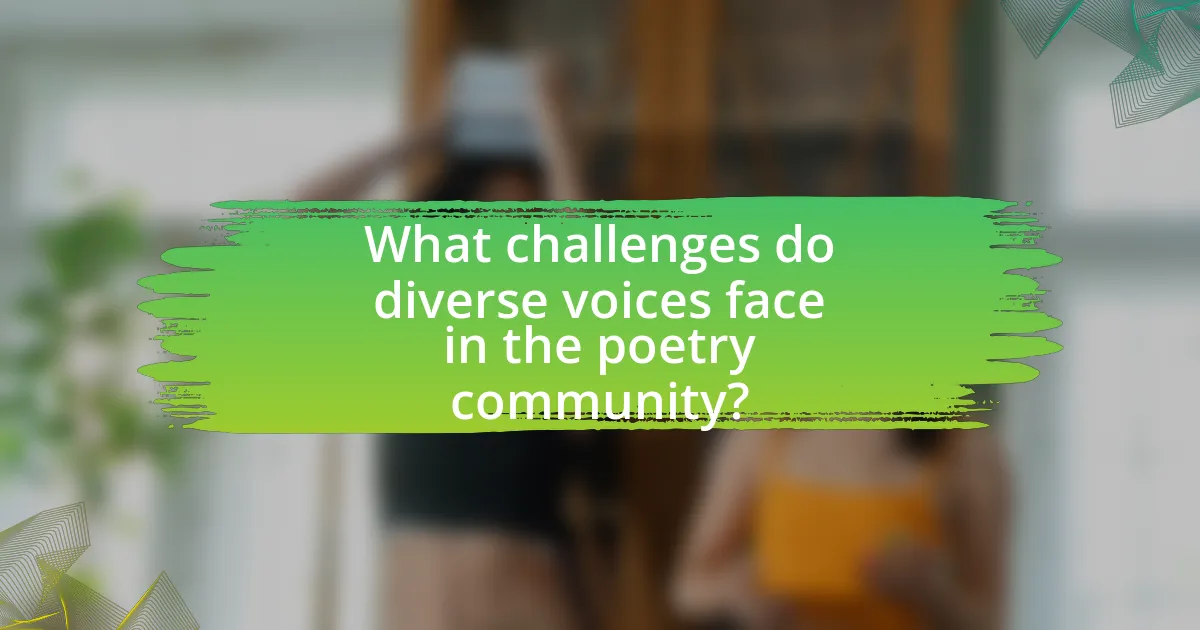
What challenges do diverse voices face in the poetry community?
Diverse voices in the poetry community face challenges such as systemic bias, limited access to platforms, and cultural appropriation. Systemic bias often manifests in the preference for established voices, which can marginalize emerging poets from underrepresented backgrounds. Limited access to platforms occurs when literary journals, readings, and competitions predominantly feature work from a homogenous group, making it difficult for diverse poets to gain visibility. Cultural appropriation complicates the landscape further, as it can lead to the exploitation of marginalized cultures by those outside of them, diluting authentic voices and experiences. These challenges hinder the full representation and appreciation of diverse perspectives in contemporary poetry.
How does systemic bias affect the visibility of diverse poets?
Systemic bias significantly reduces the visibility of diverse poets by perpetuating unequal access to platforms and recognition within the literary community. This bias manifests in various forms, such as the predominance of established voices in literary awards, publishing opportunities, and media coverage, which often favor poets from dominant cultural backgrounds. For instance, a study by the Poetry Foundation found that less than 10% of published poets in major anthologies identify as poets of color, highlighting the disparity in representation. Consequently, diverse poets struggle to gain the same level of exposure and validation as their counterparts, limiting their opportunities to reach wider audiences and impacting the overall diversity of contemporary poetry.
What barriers do emerging poets encounter in gaining recognition?
Emerging poets encounter several barriers in gaining recognition, including limited access to publishing opportunities, lack of visibility in mainstream literary circles, and financial constraints. These poets often struggle to find platforms that promote their work, as traditional publishing avenues tend to favor established authors. According to a study by the National Endowment for the Arts, only 7% of American adults reported reading poetry in 2017, indicating a narrow audience and limited market for new voices. Additionally, many emerging poets face challenges related to networking and mentorship, which are crucial for building a reputation in the literary community.
How can the poetry community address these challenges?
The poetry community can address challenges by fostering inclusivity and providing platforms for underrepresented voices. Initiatives such as workshops, open mic events, and online forums can create spaces for diverse poets to share their work and experiences. Research indicates that diverse representation in literature enhances creativity and broadens perspectives, as seen in studies by the National Endowment for the Arts, which highlight the positive impact of varied voices on cultural discourse. By actively promoting equity in poetry, the community can enrich the art form and ensure that all voices are heard and valued.
What role do literary institutions play in supporting diverse voices?
Literary institutions play a crucial role in supporting diverse voices by providing platforms for underrepresented authors and fostering inclusive literary communities. These institutions often organize workshops, readings, and festivals that highlight diverse perspectives, enabling marginalized writers to share their work and connect with audiences. For example, organizations like the Poetry Foundation and the Academy of American Poets actively promote diverse voices through grants, awards, and initiatives aimed at increasing representation in literature. This commitment to diversity not only enriches the literary landscape but also reflects broader societal changes, as seen in the growing recognition of authors from various cultural backgrounds in major literary awards.
How can awards and grants promote inclusivity in poetry?
Awards and grants can promote inclusivity in poetry by providing financial support and recognition to underrepresented voices, thereby encouraging diverse perspectives in the literary landscape. For instance, initiatives like the Cave Canem Fellowship specifically aim to support Black poets, while the Lambda Literary Awards focus on LGBTQ+ writers, ensuring that marginalized communities have access to resources that can elevate their work. These programs not only validate the contributions of diverse poets but also foster a richer, more varied poetic discourse, as evidenced by the increasing visibility of these voices in mainstream literary circles.
What initiatives exist to uplift underrepresented poets?
Initiatives that uplift underrepresented poets include programs like Cave Canem, which supports Black poets through workshops and fellowships, and the Poetry Foundation’s Diverse Voices program, which provides grants to organizations that promote diverse poetry. Additionally, the Lambda Literary Foundation offers fellowships specifically for LGBTQ+ poets, fostering inclusivity in the literary community. These initiatives are crucial as they create platforms for marginalized voices, ensuring a broader representation in contemporary poetry.

What are the future trends for diverse voices in contemporary poetry?
Future trends for diverse voices in contemporary poetry include increased representation of marginalized communities, the use of digital platforms for wider dissemination, and a focus on intersectionality in themes and styles. As poetry evolves, poets from diverse backgrounds are gaining visibility, with platforms like social media allowing for broader reach and engagement. Additionally, the rise of spoken word and performance poetry highlights the importance of oral traditions and personal narratives, fostering a deeper connection with audiences. This shift is supported by the growing number of literary awards and initiatives aimed at promoting underrepresented voices, reflecting a societal demand for inclusivity in the literary landscape.
How is technology influencing the dissemination of diverse poetic voices?
Technology is significantly influencing the dissemination of diverse poetic voices by providing platforms that enable wider access and engagement. Digital platforms such as social media, blogs, and online literary magazines allow poets from various backgrounds to share their work globally, bypassing traditional publishing barriers. For instance, platforms like Instagram and Twitter have become popular for poets to reach audiences directly, with the hashtag #poetry allowing for the discovery of diverse voices. Additionally, online poetry communities foster collaboration and support among poets, enhancing visibility for underrepresented groups. This democratization of poetry distribution is evidenced by the rise of spoken word and performance poetry being streamed online, which has increased audience engagement and participation.
What platforms are emerging for poets to share their work?
Emerging platforms for poets to share their work include social media sites like Instagram and TikTok, as well as dedicated poetry apps such as Poetizer and Write About. These platforms allow poets to reach wider audiences and engage with communities that appreciate diverse voices in contemporary poetry. For instance, Instagram has become a popular medium for poets to share visually appealing snippets of their work, while TikTok enables the performance of poetry through short videos, fostering a new generation of poetry enthusiasts. Additionally, Poetizer offers a space specifically designed for poets to connect, share, and receive feedback on their writing, further supporting the growth of diverse poetic expressions.
How does social media impact the reach of diverse poets?
Social media significantly enhances the reach of diverse poets by providing them with platforms to share their work widely and connect with global audiences. For instance, poets can utilize platforms like Instagram and Twitter to post their poetry, engage with followers, and participate in literary communities, which increases visibility and accessibility. According to a study by the Pew Research Center, 69% of adults in the U.S. use social media, allowing poets to tap into a vast audience that transcends geographical boundaries. This democratization of poetry enables underrepresented voices to gain recognition and foster dialogue around diverse experiences and perspectives.
What can readers and writers do to support diverse voices in poetry?
Readers and writers can support diverse voices in poetry by actively seeking out and promoting works from underrepresented poets. This includes reading and sharing poetry from diverse backgrounds, which helps to amplify these voices and increase their visibility. Additionally, writers can collaborate with poets from different cultures and experiences, fostering an inclusive literary community. Research indicates that diverse representation in literature not only enriches the reading experience but also encourages empathy and understanding among audiences. For example, a study by the Cooperative Children’s Book Center found that only 28% of children’s books published in 2018 featured characters of color, highlighting the need for greater support and visibility for diverse voices. By prioritizing these actions, readers and writers can contribute to a more equitable and vibrant poetry landscape.
How can individuals promote inclusivity in their reading habits?
Individuals can promote inclusivity in their reading habits by actively seeking out and engaging with literature from diverse authors and perspectives. This practice not only broadens understanding but also supports underrepresented voices in the literary community. Research indicates that exposure to diverse narratives enhances empathy and cultural awareness, as highlighted in studies by the National Endowment for the Arts, which found that reading literature can foster social understanding. By prioritizing books written by authors from various backgrounds, including different races, genders, and cultures, individuals contribute to a more inclusive literary landscape.
What are effective ways to engage with diverse poetic communities?
Effective ways to engage with diverse poetic communities include participating in local poetry readings, workshops, and festivals that celebrate various cultural backgrounds. These events foster inclusivity and provide platforms for underrepresented voices. Research indicates that community engagement in the arts enhances social cohesion and cultural understanding, as seen in initiatives like the National Poetry Slam, which showcases poets from diverse backgrounds and promotes cross-cultural dialogue. Additionally, collaborating with poets from different traditions and styles can enrich one’s own work and broaden perspectives, as evidenced by the increasing popularity of multicultural anthologies that highlight diverse poetic expressions.
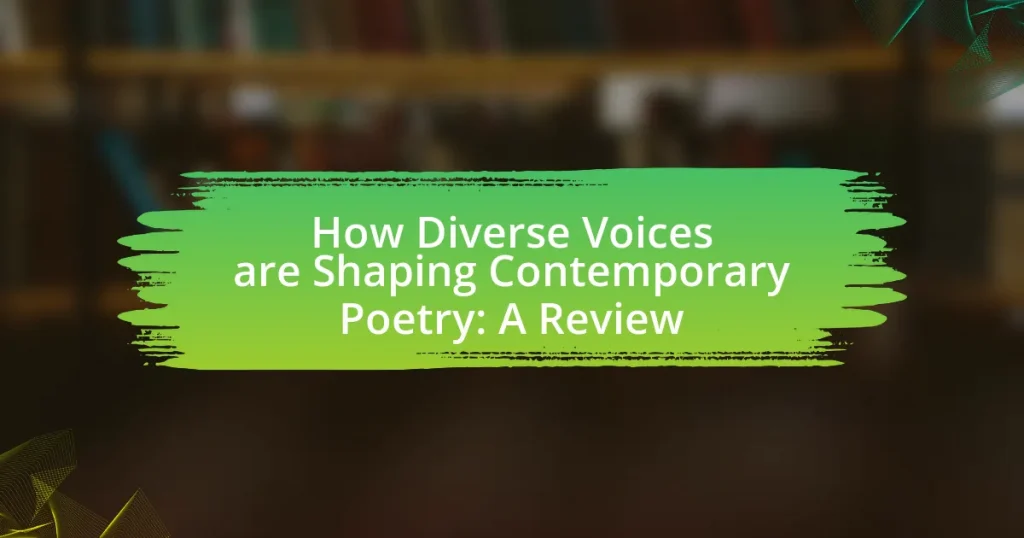
![Literary Awards: How They Shaped [Author’s Name]’s Career](https://hotkeyblog.com/wp-content/uploads/Featured-image-Literary-Awards-How-They-Shaped-Authors-Names-Career-150x150.webp)
